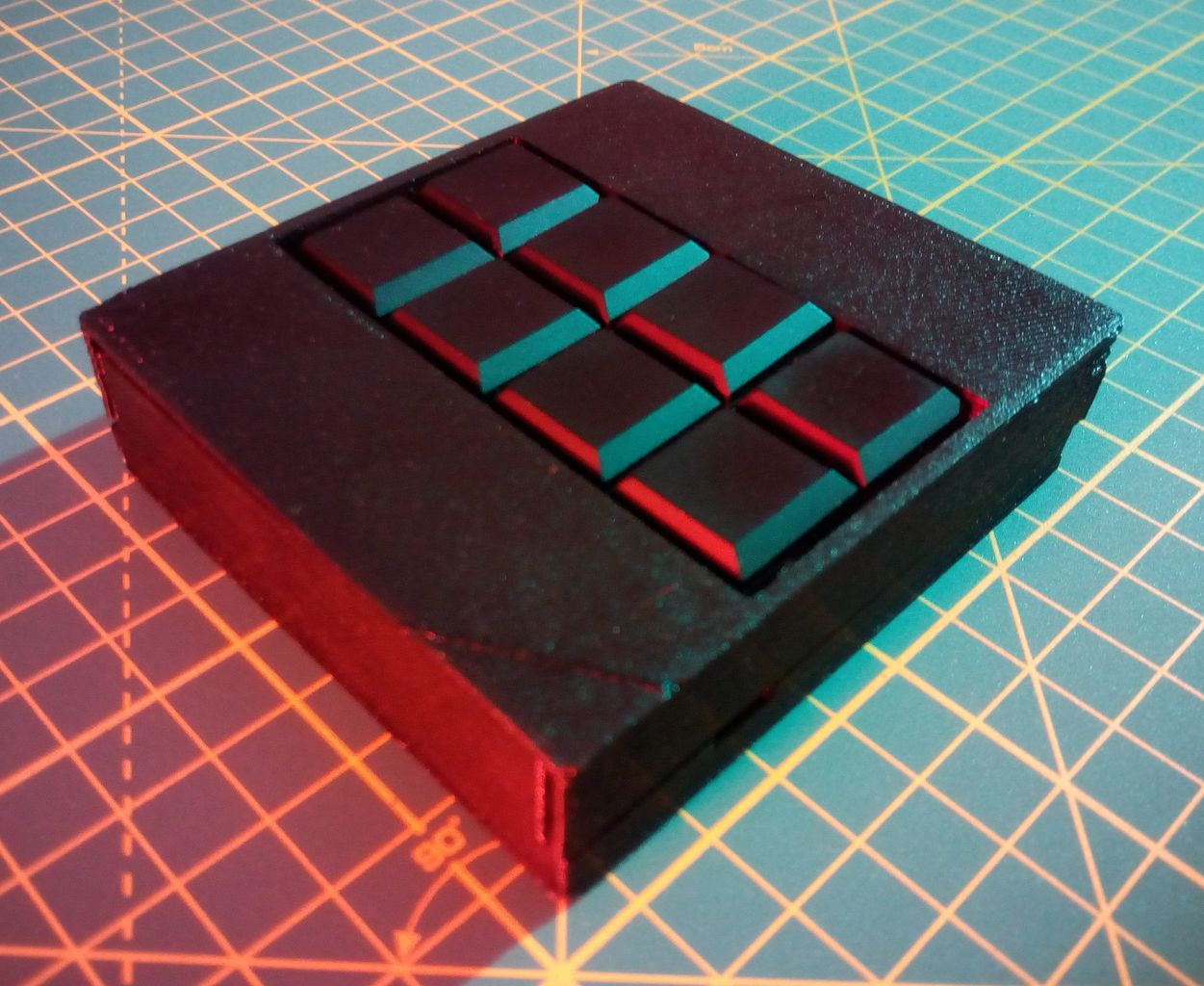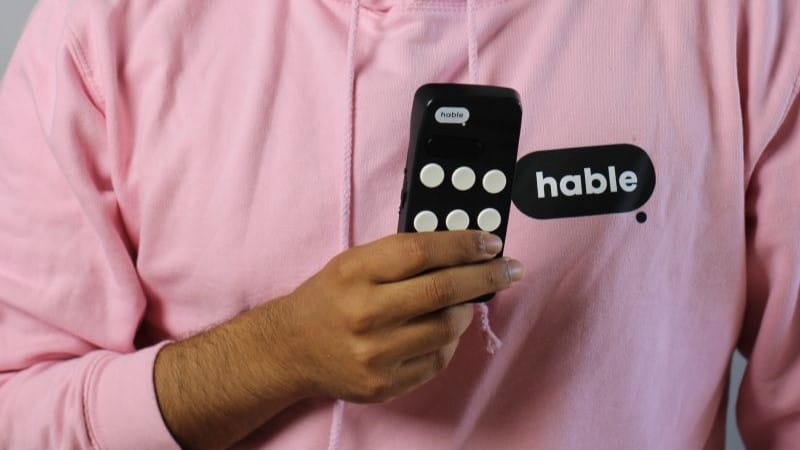
Bachelor student Johannes Střelka-Petz has designed a portable Braille keyboard for the blind and visually impaired. OSKAR, the prototype’s name, is an open source project. The blueprints and program code are freely available online.
When blind and visually impaired people use a computer, they use a braille keyboard which is based on their own tactile writing system. This new braille keyboard has the advantage of haptic symbols. This option is not yet available for smartphones. At present, people who are affected this way use voice control and a virtual keyboard. Both versions are problematic:
- voice control lacks privacy;
- The virtual keyboard lacks haptics and is slower than a physical keyboard;
Supplementary tool for the smartphone
Johannes Střelka-Petz dealt with this problem as part of his Bachelor thesis. He is studying process engineering at the TU Vienna and wrote his bachelor thesis at the Informatics Faculty department of Multidisciplinary Design & User Research. Professor Wolfgang Zagler‘s lecture papers were the inspiration for the development of a mobile keyboard. When building the prototype, the student was guided by a construction manual for a chorded keyboard. The manual is also available via Wikipedia. The components are commercially available and are based on interfaces such as Arduino, Bluetooth and USB.
Střelka-Petz has since designed a mobile keyboard that is so small that it can be attached to the back of a smartphone. It has adopted the internationally recognized form of braille as its standard.
The mobile braille keyboard concept
The braille typeface is based on six raised dots arranged in three vertical rows of two. The Braille keyboard is made up of six keys, each with a different arrangement of the tactile dots. These stand for letters. For example, on one key the first dot is marked at the top left, on another key, three dots are marked on the bottom right. Two other keys are used as modifiers. The braille keyboard is referred to as a chorded keyboard. How it functions is comparable to how a piano works. On the piano, simultaneous striking of several keys creates a chord. Whereas letters are created on the braille keyboard when various keys are touched.
OSKAR Concertino was based on the DIN 32 982 German standard. However, since this standard is somewhat outdated, the Braille expert Professor Erich Schmid developed a variant of Erich Schmid’s 8 Keys Braille that was adapted for today’s computers and smartphones.
The mobile braille keyboard prototype
The prototype is an Open Source Key Arrangement, that’s why Strelka- Petz subsequently named it OSKAR. The student gave the braille keyboard a mobile format. The target group feels haptic symbols when typing in text. The device is also used for other input. It can take over the functions of the keyboard, touch screen, keypad and remote control.
Because the keyboard is mounted on the back of the smartphone, users are faced with an inverted key system. This requires a different hand position than that of an ordinary keyboard. But the keys are arranged in such a way that the same fingers are used for different positions.

Evaluation of the mobile Braille keyboard
The aim of the design was to create a keyboard that can be operated with one hand while standing or walking. Moreover, the system should be more powerful than conventional mobile text input methods. With this aim in mind, Střelka-Petz created a one-handed and a two-handed version of the keyboard. He tested these on seven people from the Austrian Federal Institute for Blind Education. One part of the quantitative evaluation was the measurement of speed and accuracy of the prototypes. One-hand operation and two-hand operation were also compared with a virtual QWERTY keyboard.
Preference for the two-handed keyboard
Střelka-Petz started from the premise that a keyboard could be operated with one hand. However, The test subjects definitely preferred the two-handed prototype. This prototype was also the test winner. Users were able to use it four times faster than the virtual keyboard – and with greater accuracy.
The test demonstrated that using a mobile two-handed keyboard is easy to learn. The test subjects carried out the tests without any prior training. After just a few minutes, they managed a typing speed of about twenty words per minute with the new device. This speed is comparable to that of a conventional braille keyboard.
These tests have shown that a mobile chord keyboard like OSKAR can be an alternative to the touch screen. Although it was important to the test subjects that the keyboard should not only allow them to type texts but also to operate the smartphone.
OSKAR can be attached to devices like a smartphone or a tablet as a mobile device but also to a forearm or hand as well.
The bachelor thesis of Střelka-Petz was supervised by Roman Ganhör at the Institute for Visual Computing and Human-Centered Technology. On September 24, the student received the WINTEC Award (Science Award for Inclusion via Natural Sciences and Technology) from the Austrian Federal Ministry of Labour, Social Affairs, Health and Consumer Protection.
The link to the Bachelor thesis can be found here: OSKAR – Prototypical Implementation and Evaluation of a Mobile Braille Text Input Method
The link to the Open Source building instruction for OSKAR Concertina can be found here: https://gitlab.com/teamoskar/oskar
Also of interest:
Gerard & Anton Award-winner Hable: super fast braille on your smartphone
With Hable Accessibility, the European Venture Programme gets a Dutch winner







